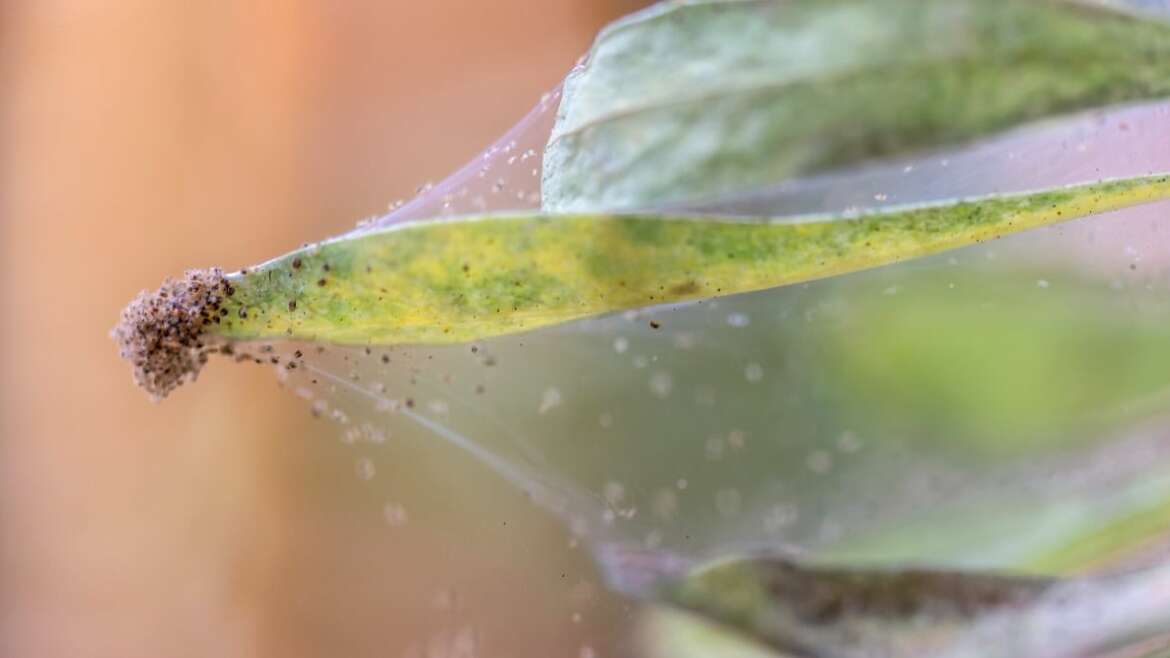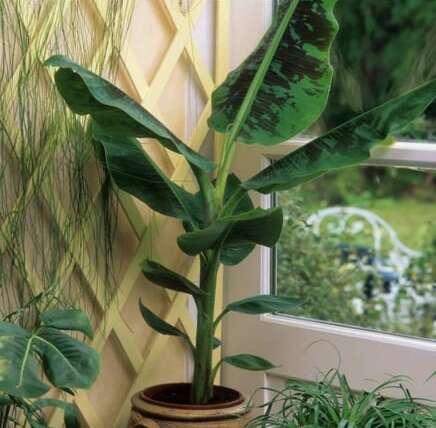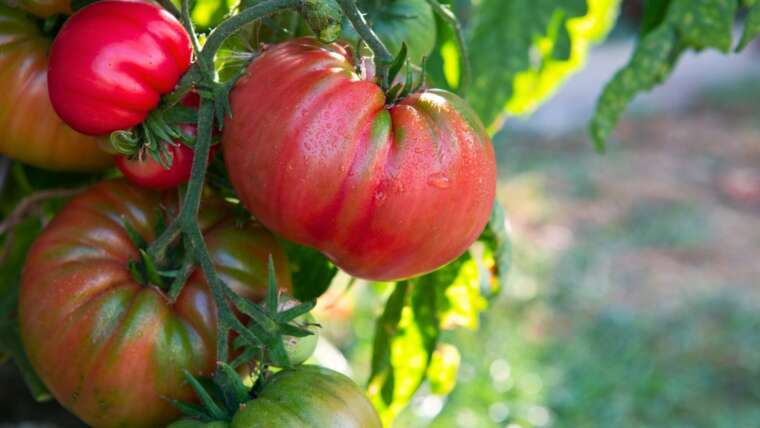Growing orchids can quickly turn from a gardening hobby to an obsession. It’s no wonder there are so many collectors and appreciation societies dedicated to these intricate plants. But one thing that may stand in the way of a successful orchid-growing journey is a word that makes all gardeners groan – pests.
Like any plant, orchids are susceptible to several pests that can cause anything from minor cosmetic damage to early death. Look out for these eight bugs to correctly identify and get them off your orchids for good.
Mealybugs
 Regular inspection of orchids for signs of pests is crucial to catch issues early.
Regular inspection of orchids for signs of pests is crucial to catch issues early.
First on the list of orchid pests is one of the toughest bugs to eliminate, especially indoors or in greenhouses. Mealybugs are sap-sucking insects that feed on all parts of the orchid, often hiding out in gaps between the leaves and stem or on the undersides of leaves.
You’ll recognize them first by their fluffy, protective white coating that looks like tufts of cotton from afar. Up close, if you see these tufts moving, you know you have a mealybug problem. They also secrete a substance called honeydew that can attract ants and sooty mold, only increasing your problems.
You probably won’t notice a couple of mealybugs, but eventually, you will spot the serious damage they cause. These sap-sucking insects damage plant tissue, causing deformation and discoloration of the leaves. They can also affect rhizomes or bulbs, stunting growth and preventing flowering.
If you regularly inspect your orchids for signs of pest infestation, you can likely catch a mealybug problem early. In these cases, spot treatment is an effective solution. Simply dip a cotton swab in isopropyl alcohol (don’t use any other alcohol types as this can damage the plants) and dab it on the bugs to kill them on contact.
For more severe cases, treating the whole plant is less time-consuming and more effective overall. Horticultural oils or insecticidal soaps suitable for ornamental plants are much stronger treatments, although they need to be used carefully as some plants can be sensitive to overuse.
Due to the short lifecycle of these pests, follow up with regular treatments once every one to two weeks until all signs of the infestation are gone. If the problem is beneath the soil, you may need to repot to remove all traces of the bugs.
Scale
 These pests attach themselves to different orchid parts, often hiding in less visible crevices.
These pests attach themselves to different orchid parts, often hiding in less visible crevices.
Scale is among the most common orchid pests, with several species feeding on tasty leaves and stems. Soft-scale insects from the Coccus genus are the most widespread, but you may encounter several scale species on your orchids.
Like mealybugs, scale insects are sap-sucking. However, they present a greater challenge in treatment due to their protective shells. These pests attach themselves to various parts of the orchid (including pseudobulbs and rhizomes), often settling in less visible crevices that make them much harder to spot with a quick glance.
When checking for scale, look out for rounded bumps on the stems and leaves. These can be either armored or soft, depending on the species. Underneath these shields, the pests feed on plant tissues, slowly killing the plant.
Scale weakens orchids in several areas, leading to symptoms like yellowing of the leaves, stunted growth, and declining health. Like mealybugs, they also produce honeydew, which can lead to the growth of sooty mold.
Spotting scale insects early is the best way to prevent a small problem from becoming an uncontrollable one. Check your orchids regularly, particularly the undersides of leaves, for small bumps.
You can remove the initial scale by hand if there are only a few. Like the treatment of mealybugs, dab them with isopropyl alcohol to kill on contact and gently wipe them away. Check every inch of the plant when spot-treating, as missing just a few will cause them to return with a vengeance.
For tougher infestations, use an insecticide to target the scale. Isolate the plant first to limit the spread and treat every two weeks until all the scale is gone. Apply your chosen product carefully to limit damage to you and the plant, covering all the tiny cracks that scale may be hiding in.
Thrips
 Likely indicators of a thrips issue are small, moving dots seen on paper or at the flower base.
Likely indicators of a thrips issue are small, moving dots seen on paper or at the flower base.
Thrips are tiny, winged insects that are incredibly hard to spot. Largely affecting dendrobiums, vandas, and cattleyas, they thrive in warm, humid environments. This, unfortunately, makes orchids grown in greenhouses or indoors particularly vulnerable.
As they are so tiny, thrips are more easily identified by the damage they cause. As with the previous pests, you’ll often notice this damage in the flowers first rather than the leaves. Petals (and leaves) develop a streaked or stippled discoloration with a silvery sheen. You may also notice water-soaked spots or even blossoms dropping.
If you suspect a thrips infestation, gently shake the orchid over a piece of paper or blow on the flowers. Any tiny moving dots on the paper or at the base of the flower mean you likely have a thrips problem.
Due to their small size and expert ability to hide in gaps without being detected, you’ll need to check your orchids very closely to identify the problem. Luckily, if you find thrips, several control options can get rid of the issue for good.
For minor infestations, start with a strong jet of water. Although this may seem minor, water can help remove several thrips from the plant, making treatment much easier. Like the previous pests, you can also use isopropyl alcohol to wipe down the leaves and stems.
Insecticidal soaps and neem oil are effective treatments for more severe problems. Due to the short lifecycle and ability to hide away, these products must be applied thoroughly and regularly until the infestation is completely gone.
Ensuring good air circulation around your orchids and keeping the area clean can help prevent thrips from becoming a serious issue. Also, keep your orchids far from garden plants most susceptible to thrips, like gardenias.
Aphids
 To treat aphids, start by spraying them off the plants.
To treat aphids, start by spraying them off the plants.
Aphids are a persistent threat in the garden, even when orchids are involved. These small, pear-shaped bugs are often found in large groups and quickly reproduce, taking over an entire greenhouse if not controlled. Aphids find new growth particularly tasty, quickly stunting growth and negatively impacting flowering.
Aphids are thankfully not as tough to spot as thrips. As they generally cluster in groups (depending on the species), visible bugs are easy to identify with a close inspection. Aphids also produce honeydew and go hand in hand with ant problems, so look out if you notice an increase in ants around your plants.
Aphids typically congregate on new growth, on the undersides of leaves, and resting on emerging flower buds. They cause leaves to curl or turn yellow, while affected flowers appear deformed. In severe cases, the flowers may not open at all.
If you spot aphids, the first step in treatment is to spray them off the plants. Any bugs that are sucking on the stems or leaves will be dislodged, killing them immediately. That won’t remove all the bugs though, so follow up with hand removal or a more intense treatment if needed.
In cases of severe infestation, horticultural oil is effective, suffocating the bugs and preventing any eggs from hatching. These treatments must be applied thoroughly and regularly, as aphids can reproduce incredibly quickly.
It’s almost impossible to completely prevent aphid problems in the garden. However, a clean and well-ventilated environment will make severe aphid problems less likely. Also, watch what plants you keep near your orchids and keep an eye on new and vulnerable growth for signs of damage.
Spider Mites
Fine webs between stems and leaves are the most noticeable sign of their invasion.
Spider mites (as the name suggests) are tiny arachnids common in warm and dry environments. Unlike the more visible insects, spider mites can establish a significant presence before they’re even noticed. Even if you spot signs of a spider mite problem, spotting the individual bugs themselves can still be hard.
Spider mites attack by piercing plant cells, leaving many damaging symptoms behind. You’ll notice a speckled or streaked pattern on the leaves, eventually turning brown and sunken over time. The leaves will shrivel and may even drop off if left unchecked. But the easiest identification method by far is fine webs appearing between leaves and stems.
To treat a spider mite problem, start by isolating the orchid to prevent its spread to other plants. Unlike some other pests, spider mites thrive in dry conditions, so increasing humidity can also prevent their spread and reproduction.
For small infestations, start by spraying as many bugs as you can off the plant. Be sure to target the undersides of leaves and between stems where they like to gather. For more established colonies, a miticide may be needed to tackle the problem.
Spider mites can produce new generations in less than a week. If you’re struggling to get rid of the problem, increase your treatment intervals to every four or five days until the mites are gone. Keep the plant isolated the entire time to stop the issue from getting out of control.
Keeping orchids healthy and ensuring they are not stressed by over or underwatering can make them less susceptible to spider mite infestations. High humidity and regular misting will also deter spider mites from settling in.
Whiteflies
 Whiteflies prefer feeding on new growth, impeding the emergence of fresh leaves or buds.
Whiteflies prefer feeding on new growth, impeding the emergence of fresh leaves or buds.
Whiteflies are tiny, moth-like insects that are especially problematic for orchids, multiplying rapidly in greenhouse conditions. They feed on plant sap like various other pests but have the added danger of the ability to fly from one plant to the next, quickly spreading around the garden.
Whiteflies can be identified by their small, winged bodies. They are tough to spot, often found on the undersides of leaves like other pests. But when the plant is disturbed, you’ll notice them flying up around the plant before shooting back to their hiding spots.
The damage caused by whiteflies includes yellowing leaves, stunted growth, and damaged flowers. Like aphids, they love to feed on new growth the most, preventing new leaves or buds from forming.
If you spot whiteflies, you can start by gently rinsing the leaves to remove any slow adults and their eggs, limiting reproduction and making treatment more effective.
After this initial cleaning, insecticidal soaps or neem oil will kill any remaining bugs and stop the eggs from hatching. These should be applied to all plant surfaces, especially the undersides of leaves, as whiteflies hide in the smallest of places.
Another effective method for controlling adult whiteflies and preventing them from laying more eggs is yellow sticky traps. These can be hung near the affected plants or buried in the soil to catch adult whiteflies as they move around, reducing their numbers and limiting reproduction.
Ensure good air circulation around your orchids and avoid overfertilizing, as sudden new growth and stress can make orchids more attractive to whiteflies.
Caterpillars
 Fostering the presence of natural predators can aid in controlling caterpillar populations.
Fostering the presence of natural predators can aid in controlling caterpillar populations.
Caterpillars are a pest you may not expect on your orchids. These larvae of butterflies and moths might seem harmless at first, but they can cause considerable damage to orchid plants – particularly the flowers.
Small caterpillars may be found feeding on the leaves and flowers, leaving characteristic chomp marks along petals and holes in the leaves. Depending on their size and color, you might also spot the caterpillars themselves. You’d be surprised how effective the caterpillar camouflage of some species can be.
The impact of caterpillars on orchids can range from minor cosmetic damage (especially if caught early) to severe health issues. Leaving them to run wild can lead to defoliation, stunted growth, and reduced blooming. In some cases, caterpillars can even eat into the stems or roots, causing more significant damage.
If you find a few caterpillars, you can often remove them by hand (that is, if you’re not squeamish). For more severe infestations, Bacillus thuringiensis (Bt) is an effective natural bacterial toxin. It is safe for use on plants (including orchids) but lethal to caterpillars.
Since caterpillars are large and generally easy to spot, regular inspection is the best way to prevent damage. Always check new plants before bringing them home in case an unsuspecting caterpillar is hitching a ride to your garden. If your orchids are out in the open, encouraging natural predators like beneficial insects can also help keep caterpillar populations in check.
Slugs
 These pests move between plants swiftly, causing visible damage and inviting secondary infections.
These pests move between plants swiftly, causing visible damage and inviting secondary infections.
Slugs and snails are a nuisance in the garden and are, unfortunately, fond of the soft, succulent tissues of orchid leaves. They are most active at night, causing extensive damage under the cover of darkness to reveal several signs of damage.
Look for irregular holes in leaves and flowers, often with smooth edges, as the first sign of a problem. As we all know, slugs and snails also leave behind a distinctive slimy trail that makes them easier to identify.
Slugs and snails can rapidly move from one plant to another, quickly feeding and leaving much visible damage behind. In addition to the visible damage, you may also encounter secondary infections in the plant, as the open wounds are ideal entry points for fungal and bacterial problems.
Look out for slugs during the evening and early morning hours when these pests are most active. You can also head into the garden at night with a torch to catch them in the act. If you find slugs, they can often be removed by hand (but it’s best to wear gloves – slugs are known for being slimy).
Organic slug baits are available, often in a granular form, and can be sprinkled near the plants to draw the slugs away and gradually kill them off. You can also make your own traps by keeping a shallow dish of beer nearby. The beer attracts the slugs and snails that fall into the trap and eventually drown.
As slugs thrive in damp conditions, keeping the area around your orchids dry can stop this recurring issue. Also, keep the area around your orchids clean and free of debris, as slugs often use this to hide out when the sun is up.
Final Thoughts
No one wants to deal with pests, but they are an unfortunate reality all gardeners have to deal with. Look out for these common orchid pests and apply the respective treatment as soon as possible to preserve the health of your precious plants.




